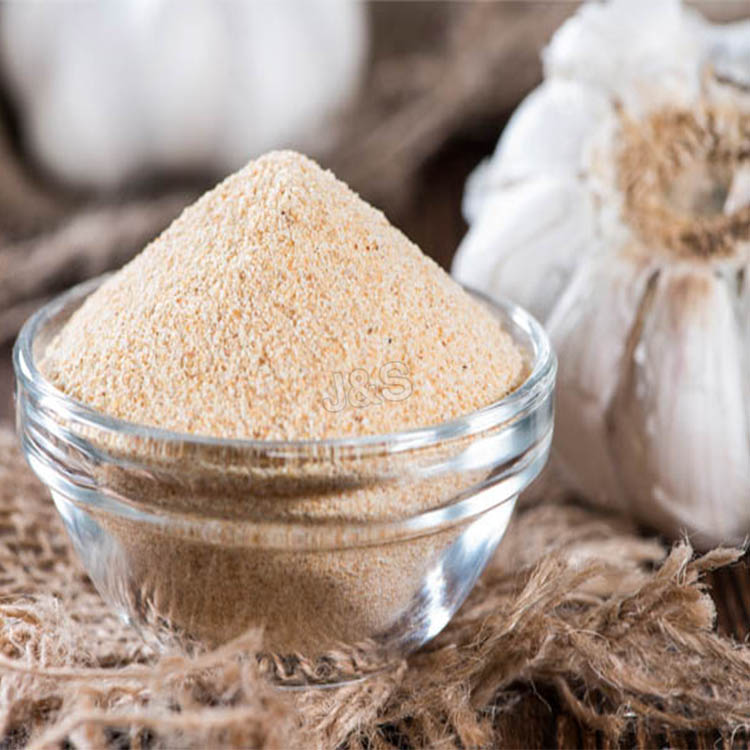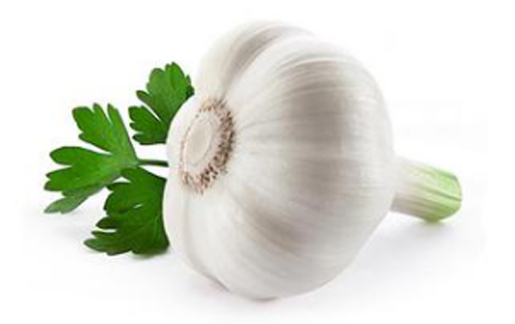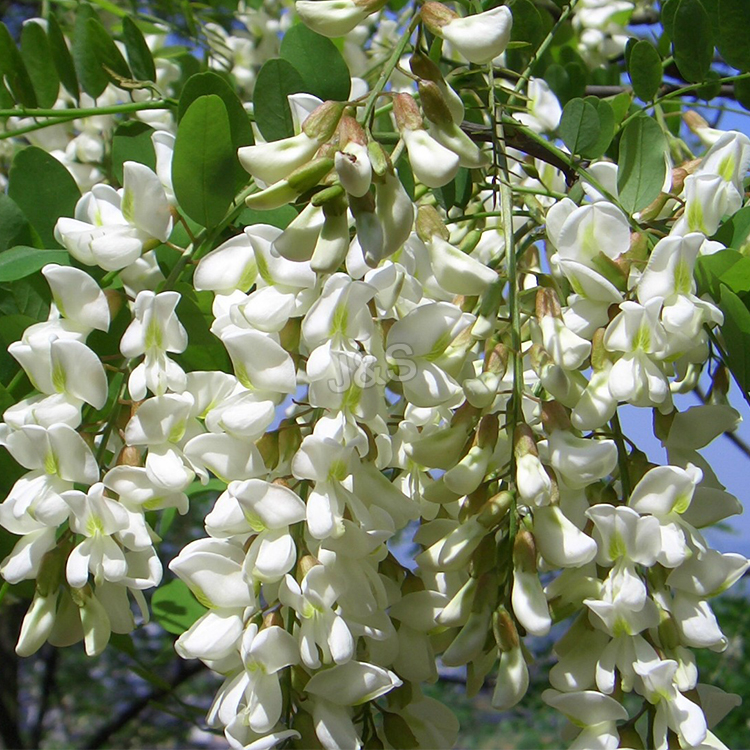Hot Sale for Garlic Extract Powder Factory for Borussia Dortmund
Hot Sale for Garlic Extract Powder Factory for Borussia Dortmund Detail:
[Latin Name] Allium sativum L.
[Plant Source] from China
[Appearance] Off-white to light yellow Powder
Plant Part Used:Fruit
[Particle size] 80 Mesh
[Loss on drying] ≤5.0%
[Heavy Metal] ≤10PPM
[Storage] Store in cool & dry area, keep away from the direct light and heat.
[Shelf life] 24 Months
[Package] Packed in paper-drums and two plastic-bags inside.
[Net weight] 25kgs/drum
Introduction:
In ancient times, garlic was used as a remedy for intestinal disorders, flatulence, worms, respiratory infections, skin diseases, wounds, symptoms of aging, and many other ailments. To date, more than 3000 publications from all over the world have gradually confirmed the traditionally recognized health benefits of garlic.
Although aged Garlic has so many benefits to human body, but it has a unpleasant odor. most of people do not like this taste ,so we use modern biological technology, to enrichment the elite containing in the Garlic and get rid of the odor of the product ,we call it aged garlic extract
Function:
(1) Has a strong and extensive antibiotic ability. It can kill all kinds of bacteria totally sucn as gram-positive bacteria, gram-negative bacteria and fungi; can restrain and kill some pathogenic microorganisms such as many staphylococcocci, pasteurella, typhoid bacillus, shigella dysenteriae and pseudomonas aeruginosa. So, it can prevent and cure many kinds of contagion, especially coccidiosis in chicken.
(2) Because of its strong garlic odour, allicin can increase feed intake of the birds and fish.
(3) Flavors the meals with a uniform garlic smell and mask unpleasant odors of various feed components.
(4) Strengthen immune system, and promote healthy growth in poultry and fish.
(5) Allicin’s garlic odour is effective in repelling flies, mites and other insects from the feed.
(6) Allicin has a potent sterilization effect on Aspergillus flavus, Aspergillus Niger, Aspergillus fumigatus, etc. and is therefore able to prevent the onset of feed mildew and prolong feed life.
(7) Allicin is safe with no residual drugs
Product detail pictures:

Related Product Guide:
We take "customer-friendly, quality-oriented, integrative, innovative" as objectives. "Truth and honesty" is our administration ideal for Hot Sale for Garlic Extract Powder Factory for Borussia Dortmund , The product will supply to all over the world, such as: Lesotho, Philippines, Japan, We have constructed strong and long co-operation relationship with an enormous quantity of companies within this business in Kenya and overseas. Immediate and specialist after-sale service supplied by our consultant group has happy our buyers. Detailed Info and parameters from the merchandise will probably be sent to you for any thorough acknowledge. Free samples may be delivered and company check out to our corporation. n Kenya for negotiation is constantly welcome. Hope to get inquiries type you and construct a long-term co-operation partnership.
foodoffensive.com’s weekly video broadcast for 8/6/12. In this episode, I cover Stevia (part 1) as the fifth installment in a series of special reports on sweeteners.
*If this video is connected to advertisements on YouTube, they are chosen randomly (not by me)and I may not share the same views as those ads presented (i.e Obama or Romney 2012 campaigns).
This is the source material for this episode:
https://www.steviacafe.net/dangers-of-stevia
https://www.stevia.com
https://www.fda.gov/AboutFDA/Transparency/Basics/ucm214864.htm
https://www.fda.gov/AboutFDA/Transparency/Basics/ucm194320.htm
https://www.stevia.com/Stevia_Article/Frequently_asked_questions_FAQ/2269
https://www.naturalnews.com/031011_stevia_health.html
https://www.naturalnews.com/029057_agave_nectar_stevia.html
https://articles.mercola.com/sites/articles/archive/2008/12/16/stevia-the-holy-grail-of-sweeteners.aspx
https://www.webmd.com/vitamins-supplements/ingredientmono-682-STEVIA.aspx?activeIngredientId=682&activeIngredientName=STEVIA
https://www.cspinet.org/new/sugar_limit.html
https://www.zevia.com/stevia
Professor Maureen McCann, Director of the Energy Center at Purdue University, addresses “A Roadmap for Selective Deconstruction of Lignocellulosic Biomass to Advanced Biofuels and Useful Co-Products” on February 11, 2013 as part of the Andlinger Center’s 2012-2013 Highlight Seminar Series.
ABSTRACT
Second-generation biofuels will be derived from lignocellulosic biomass using biological catalysis to use the carbon in plant cell wall polysaccharides for ethanol or other biofuels. However, this scenario is both carbon- and energy-inefficient. The major components of biomass are cellulose, hemicellulose and lignin. Biological conversion routes utilize only the polysaccharide moiety of the wall, and the presence of lignin interferes with the access of hydrolytic enzymes to the polysaccharides. Living micro-organisms, required to ferment released sugars to biofuels, utilize some sugars in their own growth and co-produce carbon dioxide. In contrast, chemical catalysis has the potential to transform biomass components directly to alkanes, aromatics, and other useful molecules with improved efficiencies. The Center for Direct Catalytic Conversion of Biomass to Biofuels (C3Bio) is a DOE-funded Energy Frontier Research Center, comprising an interdisciplinary team of plant biologists, chemists and chemical engineers. We are developing catalytic processes to enable the extraction, fractionation, and depolymerization of cellulose and hemicellulose coupled to catalytic transformation of hexoses and pentoses into hydrocarbons. Additional catalysts may cleave the ether bonds of lignin to release useful aromatic co-products or that may oxidize lignols to quinones. In a parallel approach, fast-hydropyrolysis is a relatively simple and scalable thermal conversion process. Our understanding of biomass-catalyst interactions require novel imaging and analysis platforms, such as mass spectrometry to analyze potentially complex mixtures of reaction products and transmission electron tomography to image the effects of applying catalysts to biomass and to provide data for computational modeling. By integrating biology, chemistry and chemical engineering, our data indicate how we might modify cell wall composition, or incorporate Trojan horse catalysts, to tailor biomass for physical and chemical conversion processes. We envision a road forward for directed construction and selective deconstruction of plant biomass feedstock.
BIOGRAPHY
Maureen McCann is the Director of Purdue’s Energy Center, part of the Global Sustainability Initiative in Discovery Park. She obtained her undergraduate degree in Natural Sciences from the University of Cambridge, UK, in 1987, and then a PhD in Botany at the John Innes Centre, Norwich UK, a government-funded research institute for plant and microbial sciences. She stayed at the John Innes Centre for a post-doctoral, partly funded by Unilever, and then as a project leader with her own group from 1995, funded by The Royal Society. In January 2003, she moved to Purdue University as an Associate Professor, and she is currently a Professor in the Department of Biological Sciences.
The goal of her research is to understand how the molecular machinery of the plant cell wall contributes to cell growth and specialization, and thus to the final stature and form of plants. Plant cell walls are the source of lignocellulosic biomass, an untapped and sustainable resource for biofuels production with the potential to reduce oil dependence, improve national security, and boost rural economies. She is also the Director of the Center for Direct Catalytic Conversion of Biomass to Biofuels (C3Bio), an interdisciplinary team of biologists, chemists and chemical engineers in an Energy Frontier Research Center funded by the US Department of Energy’s Office of Science.
Products and services are very good, our leader is very satisfied with this procurement, it is better than we expected,





